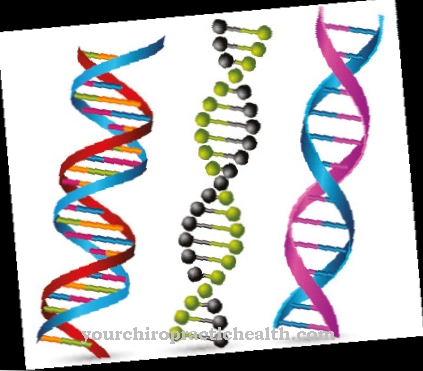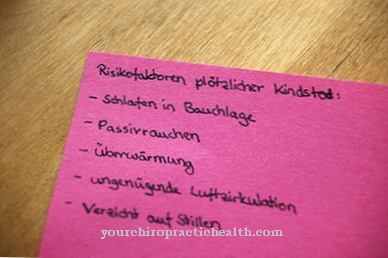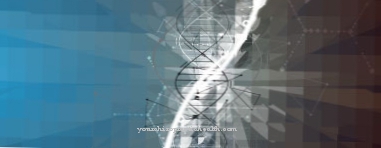Symptomatic of that Karsch-Neugebauer Syndrome are above all deformations of the hands and feet. Uncontrollable eye tremors and severe squinting are also typical. All therapy options are primarily based on the symptoms and treatment begins immediately after the birth.
What is Karsch-Neugebauer Syndrome?

© Alila Medical Media - stock.adobe.com
In which Karsch-Neugebauer Syndrome it is a very rare hereditary disease. It was first described by an ophthalmologist in 1936. Then it was a Viennese orthopedic surgeon who went into it again in 1962.
He observed a family over several generations and was able to gain extensive knowledge. The names of the two experts are J. Karsch and H. Neugebauer. So you were not only a researcher but also a namesake. The disease is inherited as an autosomal dominant trait.
This means that a defective gene is enough to transmit the Karsch-Neugebauer syndrome. The carrier of the diseased gene can be either father or mother. It is not imperative that the next offspring also get sick. Often it is only the grandchildren or great-grandchildren who inherit the Karsch-Neugebauer syndrome.
causes
During fertilization, all of the parents' chromosome pairs come together and a single set of chromosomes becomes a complete set. One chromosome of the same type in each of the mother and father become a pair. If only one of these genome carriers then carries the Karsch-Neugebauer syndrome, the disabled child is born.
A similar picture emerges with Berndorfer syndrome. The disease is also autosomal dominant and is characterized by deformations of the upper lip and hands and feet.
Symptoms, ailments & signs
The disability can be recognized even before the first cry of the newborn. Limb defects in the form of gaps in the hands and feet or finger contractures are clear. The absence of individual or all fingers is also conceivable. With advancing age, symptoms also become visible in the eye.
They show up in nystagmus, among other things. These are uncontrollable, regularly recurring movements of the eyes. The muscles involved here can only fixate to a limited extent or not at all, and the eyeball is in constant and abnormal movement. Normal use of the extremities is not possible due to the cracks in the hands and feet.
A split hand can lead to various functional restrictions due to the lack of one or more fingers. If the middle finger is missing, gripping is still possible. If, on the other hand, there is only one finger, the hand cannot fulfill any function. Even with the split foot, the function of the extremity is severely restricted or useless.
Not just the fact that individual toes are missing, but in most cases they are so fused with the foot that their presence is barely noticeable. Infants who have no aids and who do not receive early treatment cannot learn to walk. Standing also becomes a problem for them.
Diagnosis & course of disease
The finding of deformed hands and feet is clear immediately after birth. The baby is born with severe disabilities. It is not uncommon for parents to be unprepared for this.
In some cases, the distortions can already be seen on ultrasound. The parents then have the option of terminating the pregnancy. This is a difficult decision and those affected must be accompanied by sensitive experts. The Karsch-Neugebauer syndrome not only shows deformities of the hands and feet.
The eyes are also often affected. Your muscles are then not in balance with one another. Sick people cannot fixate normally and are severely impaired. The symptom can be reduced with aids such as special glasses and / or eye patches. In nystangism, the obstruction becomes visible through constant, uncontrollable blinking.
Complications
Due to the Karsch-Neugebauer syndrome, those affected mainly suffer from severe deformations over the entire body. In most cases, however, the feet and hands in particular are affected by these deformations, so that there are significant restrictions in the patient's everyday life. As a rule, the syndrome is diagnosed immediately after birth, so that treatment can also be initiated immediately.
It is not uncommon for those affected to have a so-called split hand. With this, various movements from everyday life can no longer be performed correctly, so that the hand is completely unusable. Toes or fingers can also be missing. As a result of the malformations, children in particular suffer from teasing and bullying, which can lead to psychological complaints. The development of the child is also severely restricted and delayed by these symptoms.
If Karsch-Neugebauer syndrome is diagnosed before the birth, those affected can consider whether they want to terminate the pregnancy prematurely. It is not uncommon for the parents to be psychologically stressed, which may require treatment. The symptoms can be limited after birth with the help of surgical interventions and therapies. Life expectancy is generally not reduced by Karsch-Neugebauer syndrome.
When should you go to the doctor?
A pregnant woman should attend all pregnancy check-ups. In imaging procedures, optical changes such as those in Karsch-Neugebauer syndrome can often be seen in the first few weeks of pregnancy. If the parents wish to have an abortion based on the diagnosis, participation in further checks and counseling sessions is necessary.
If the disease is not noticed during the course of the pregnancy or if the parents decide against an abortion, the deformations and deformations of the newborn can be seen all over the body immediately after birth at the latest. In the case of an inpatient birth, the obstetricians and paediatricians take over the further necessary steps. If a home birth takes place without the presence of a midwife, a doctor's visit is necessary immediately after the birth. However, it is advisable to contact an emergency doctor so that medical care for mother and child can be guaranteed as soon as possible.
The Karsch-Neugebauer syndrome is characterized by such strong visual characteristics that hands, feet or the entire skeletal system are affected. Often the newborn's eyes already indicate the presence of a serious illness. A doctor's visit is necessary immediately so that an optimal therapy option can be initiated. In addition, in many cases the parents need psychological support. If the mother of the child has emotional or mental problems, a doctor is needed.
Treatment & Therapy
Treatment for Karsch-Neugebauer syndrome is primarily to relieve symptoms. Physiotherapy is therefore started immediately after the birth. This prevents contractures and promotes normal blood flow to the arms and legs.
Children learn that even though one or more fingers are missing, they can hold objects in their hands. Visiting an orthopedic surgeon is important and should also be done in the first few weeks of life. Together with the parents, he will prescribe aids that enable the child to use his feet. Later on, those affected can also be fitted with hand prostheses.
Depending on the severity of the disfigurement, it is also possible that fingers or toes are surgically built up. In some cases, eye muscle surgery can also improve vision impairment. All interventions take into account how severe the Karsch-Neugebauer syndrome is. So there is no universal therapy.
Outlook & forecast
The prognosis for Karsch-Neugebauer syndrome is poor. Despite advanced medical options, the disease cannot be cured under the current circumstances. The cause of the syndrome is a genetic defect. However, legal requirements prohibit scientists and researchers from changing human genetics. Therefore, medical professionals focus on treating the patient's symptoms.
Since the disease is associated with severe deformities of the skeletal system, surgical procedures are used to improve mobility. There are also therapeutic approaches that include strengthening eyesight. The aim of the treatment is not recovery, but rather an optimization of the quality of life. It is not always possible to adjust the eyesight to that of a healthy person. In addition, visual flaws are to be expected despite the interventions. The physiotherapy exercises are prescribed and used immediately after birth. The more severe the deformations and the later physiotherapeutic treatment takes place, the less favorable the further course of the disease.
Due to the visual anomalies and health restrictions, secondary diseases can occur. The operative interventions are also associated with risks. Those affected are exposed to emotional stress, which in some cases leads to additional mental illness. The overall health of the patient must be taken into account when making a prognosis.
prevention
There are no preventive measures. If this condition occurs in the family, everyone should undergo a thorough examination. This applies above all to members of the family who are of childbearing or child-bearing age. It is also recommended that the disease be reported.
This can already be done in the maternity hospital. The further course is then precisely documented. Scientists are more likely to continue researching the hereditary disease. Only then can you get to the bottom of all the causes and at the same time develop even better therapeutic options.
Aftercare
In most cases, those affected by Karsch-Neugebauer syndrome do not have any special follow-up options. Here, they are primarily dependent on an early and rapid diagnosis of the disease so that no further complications can arise. An early diagnosis always has a positive effect on the further course of this disease, so that a doctor should be consulted as soon as the first signs and symptoms appear.
Most of those affected with Karsch-Neugebauer syndrome are dependent on physiotherapy and physiotherapy to properly and permanently relieve the symptoms. Many of the exercises from these therapies can also be performed at home, which certifies the treatment. In many cases, surgical interventions are also necessary to alleviate the symptoms of Karsch-Neugebauer syndrome.
The child should definitely rest and take it easy after the procedure. The further course depends very much on the severity of the disease, so that no general prediction can be made. If you want to have children, however, genetic testing and counseling should always be carried out to prevent the disease from recurring.
You can do that yourself
People with Karsch-Neugebauer syndrome have very limited opportunities to help themselves. Patients and their relatives are dependent on medical treatment to alleviate symptoms.
Since most of the symptoms of the syndrome can be alleviated by physical therapy exercises, these exercises can also be performed in your own home. Often times, performing these exercises in a safe environment is more comfortable for the child. Regular visits to an orthopedic surgeon are advisable in order to promptly counter any complications or new complaints. It is primarily the responsibility of the parents to regularly accompany the children to an examination. Eye complaints can usually only be resolved through surgery.
Since the syndrome often comes with psychological complaints, discussions with relatives are very helpful. It is also extremely important that the child is fully informed about the disease so that no questions remain unanswered. In the case of Karsch-Neugebauer syndrome, contact with other patients can also have a positive effect on the course of the disease, as information is often exchanged.



.jpg)








.jpg)



.jpg)










.jpg)
